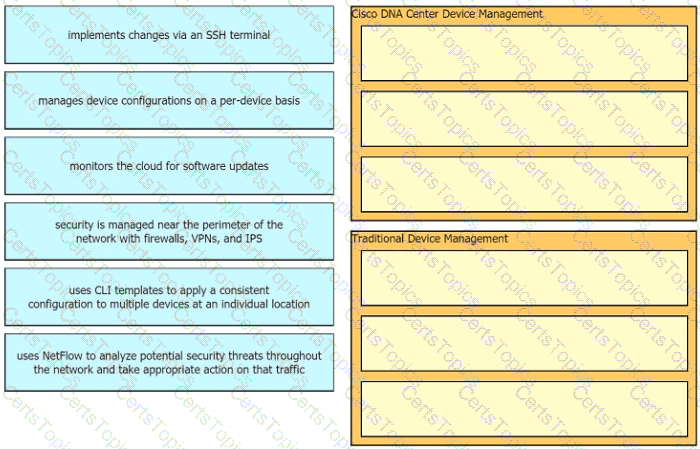What is the effect when loopback interfaces and the configured router ID are absent during the OSPF Process configuration?
A Cisco IP phone receive untagged data traffic from an attached PC. Which action is taken by the phone?
Drag the descriptions of device management from the left onto the types of device management on the right.

Which two QoS tools provides congestion management? ( Choose two )